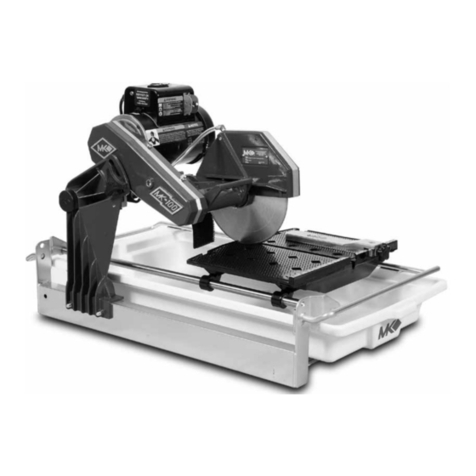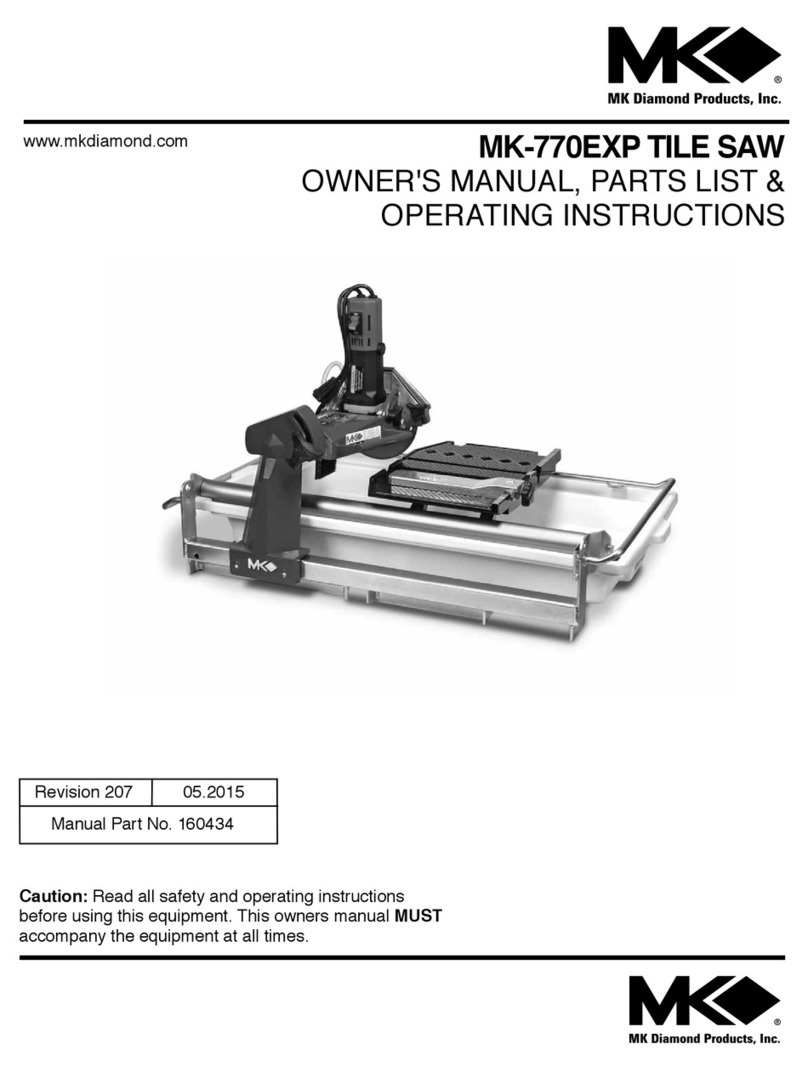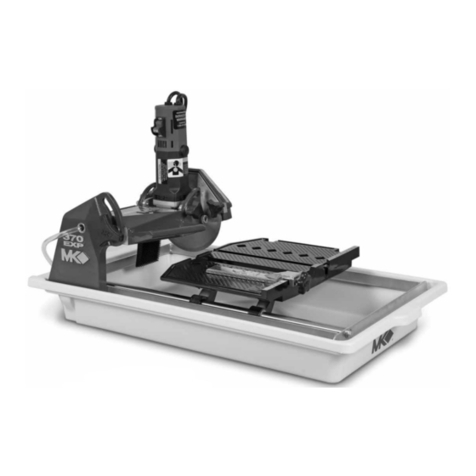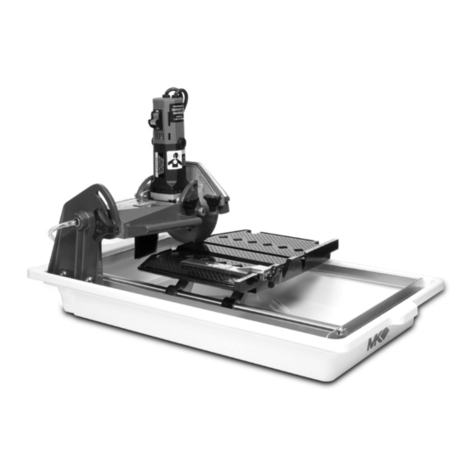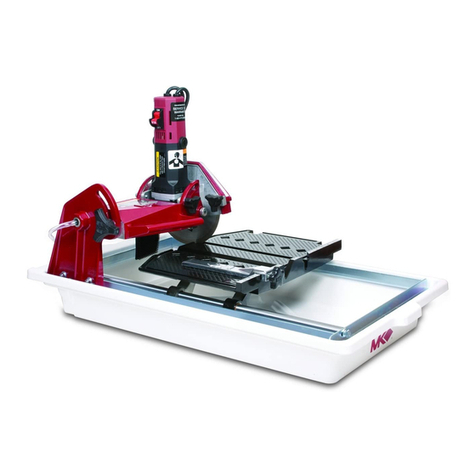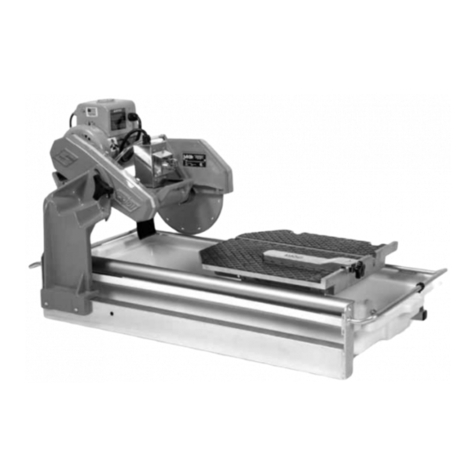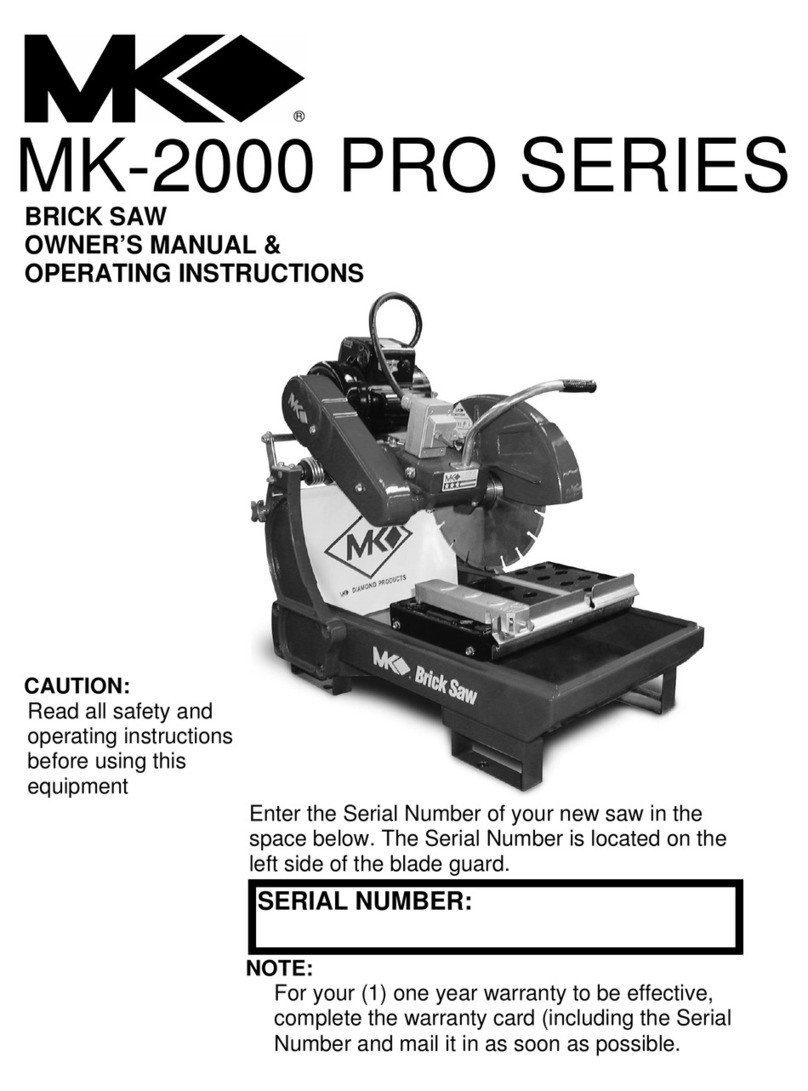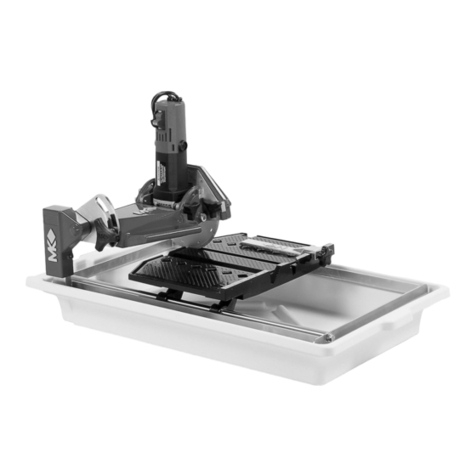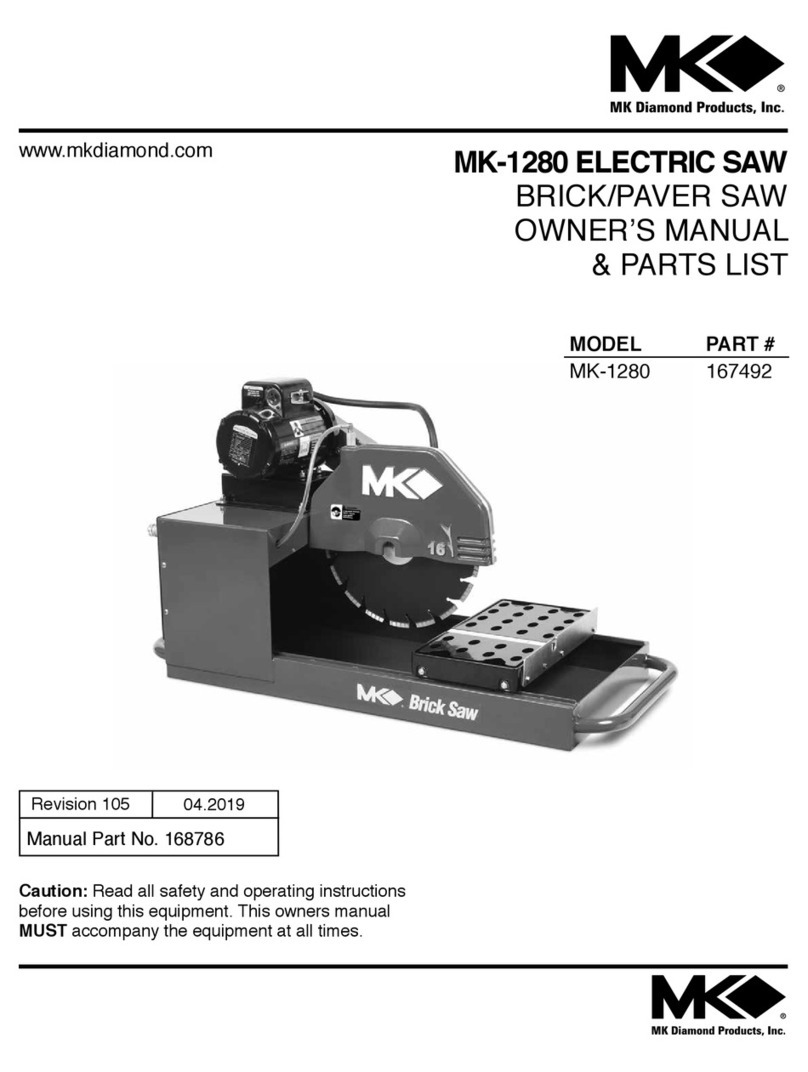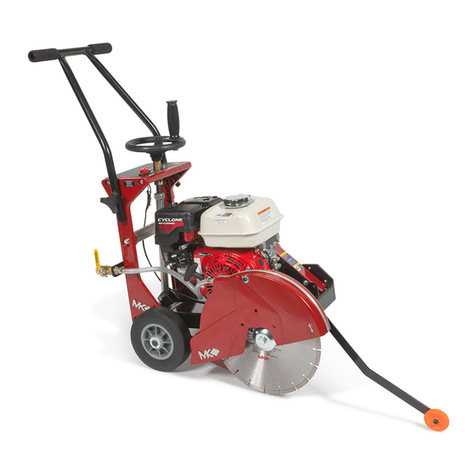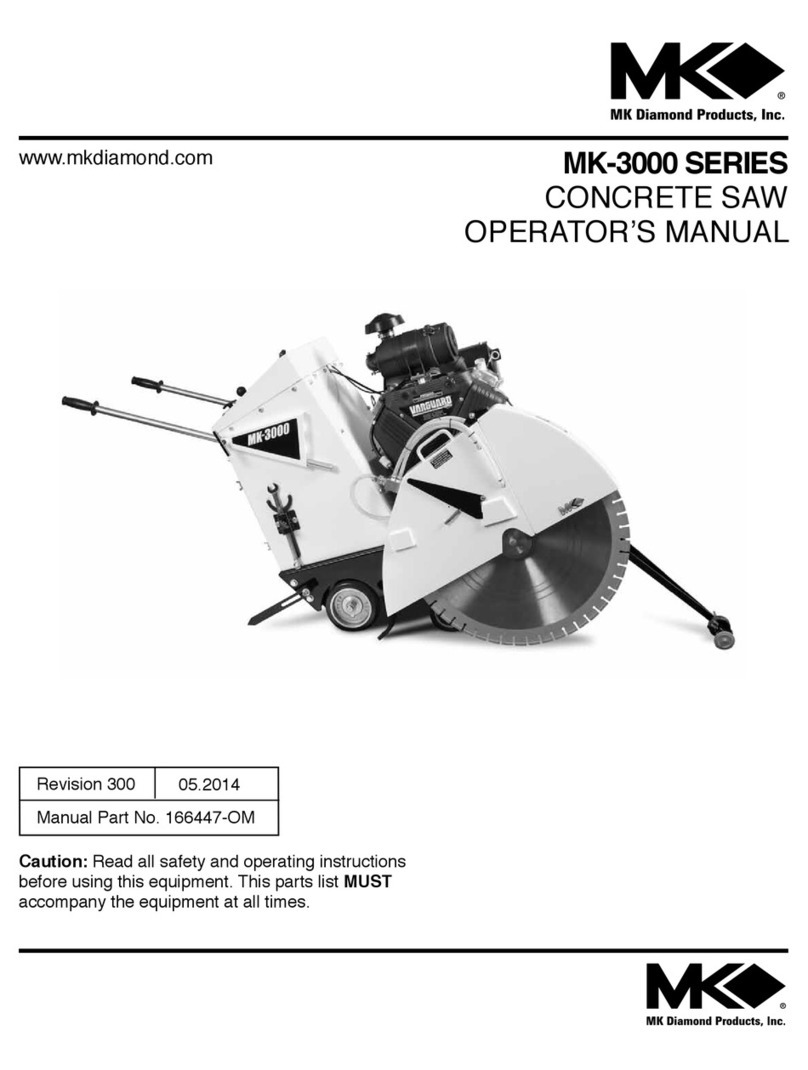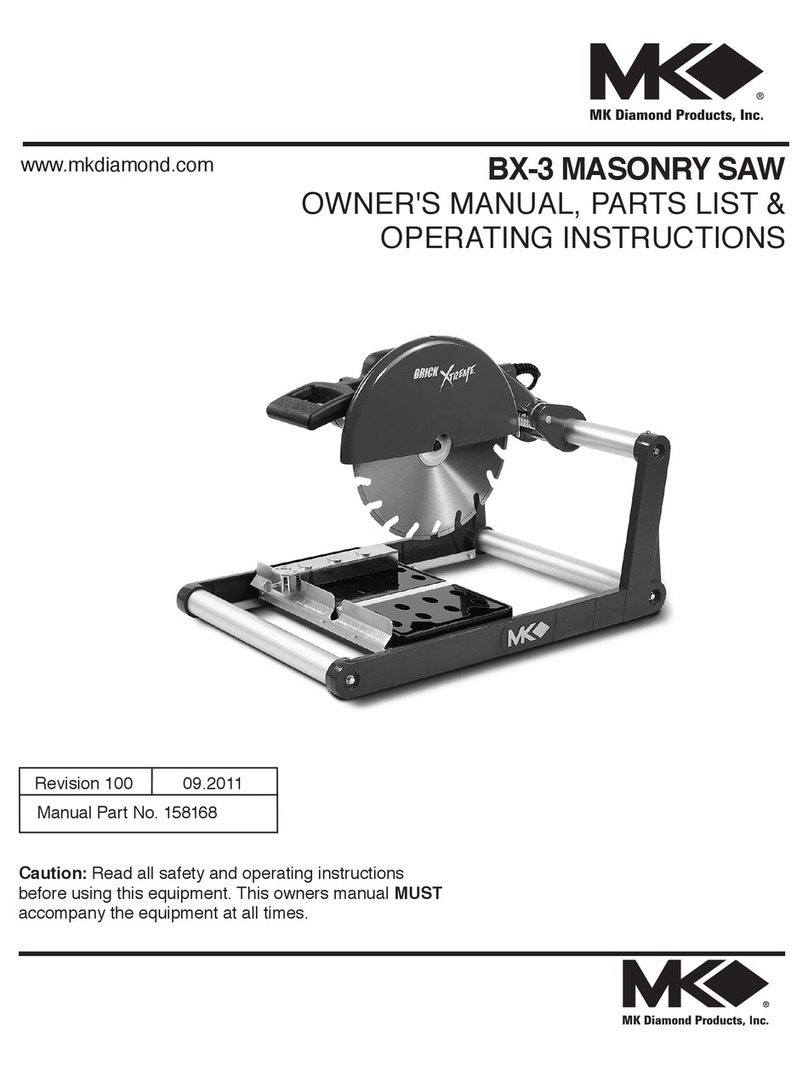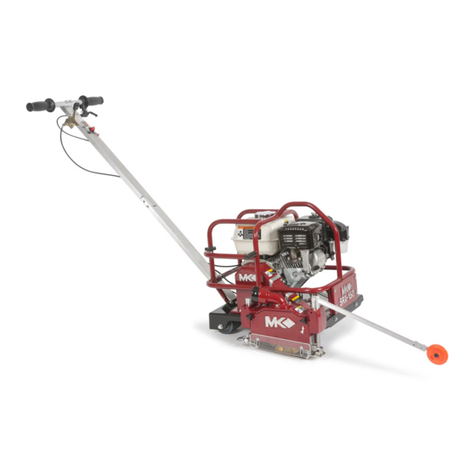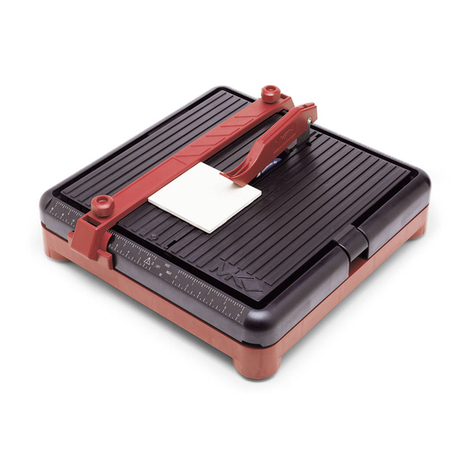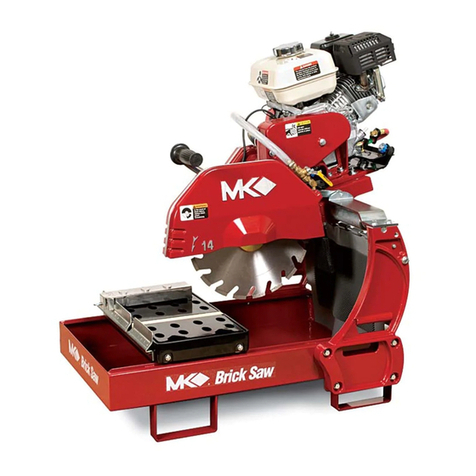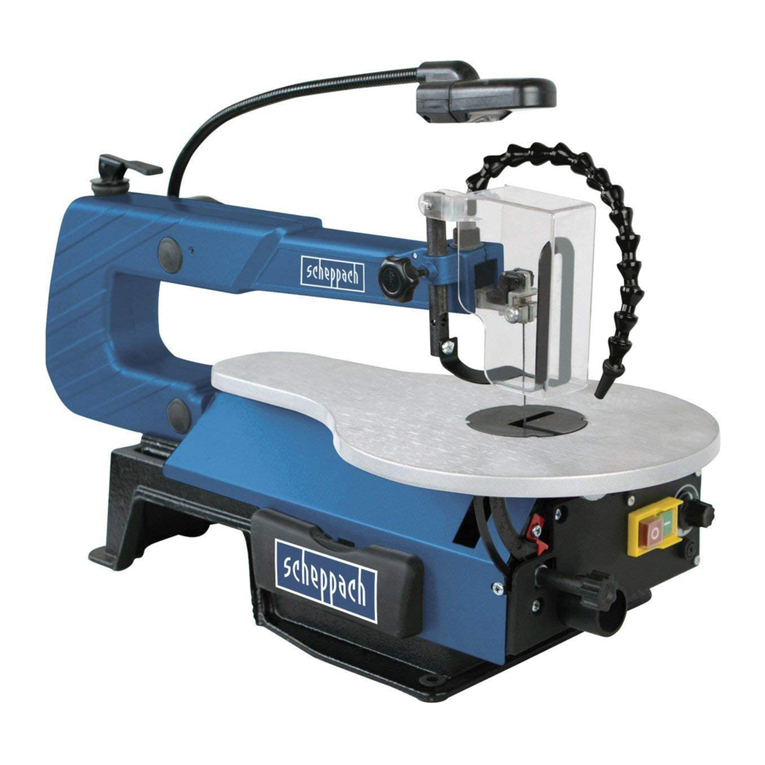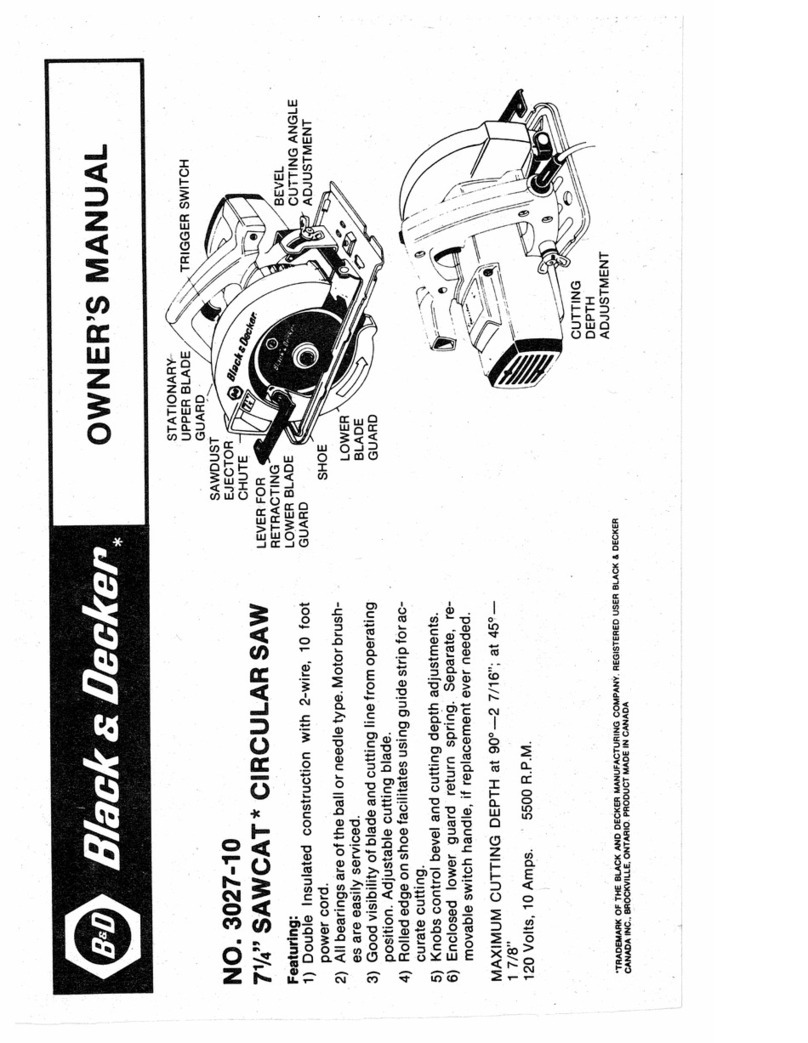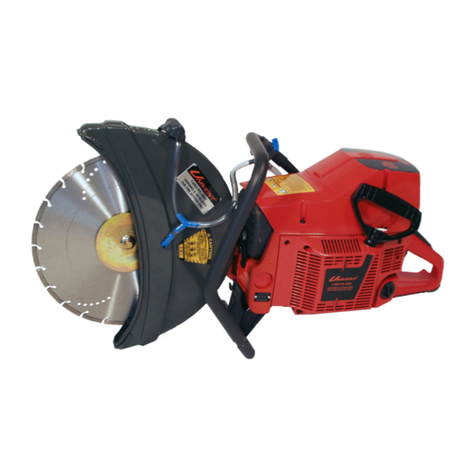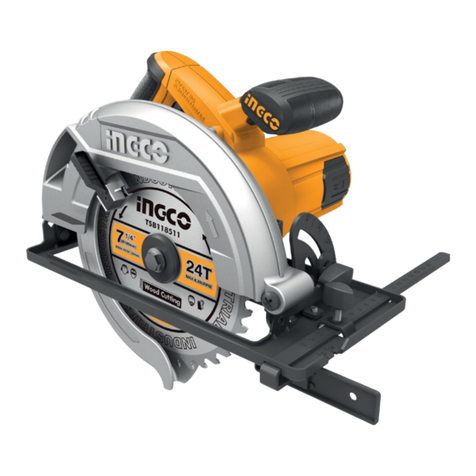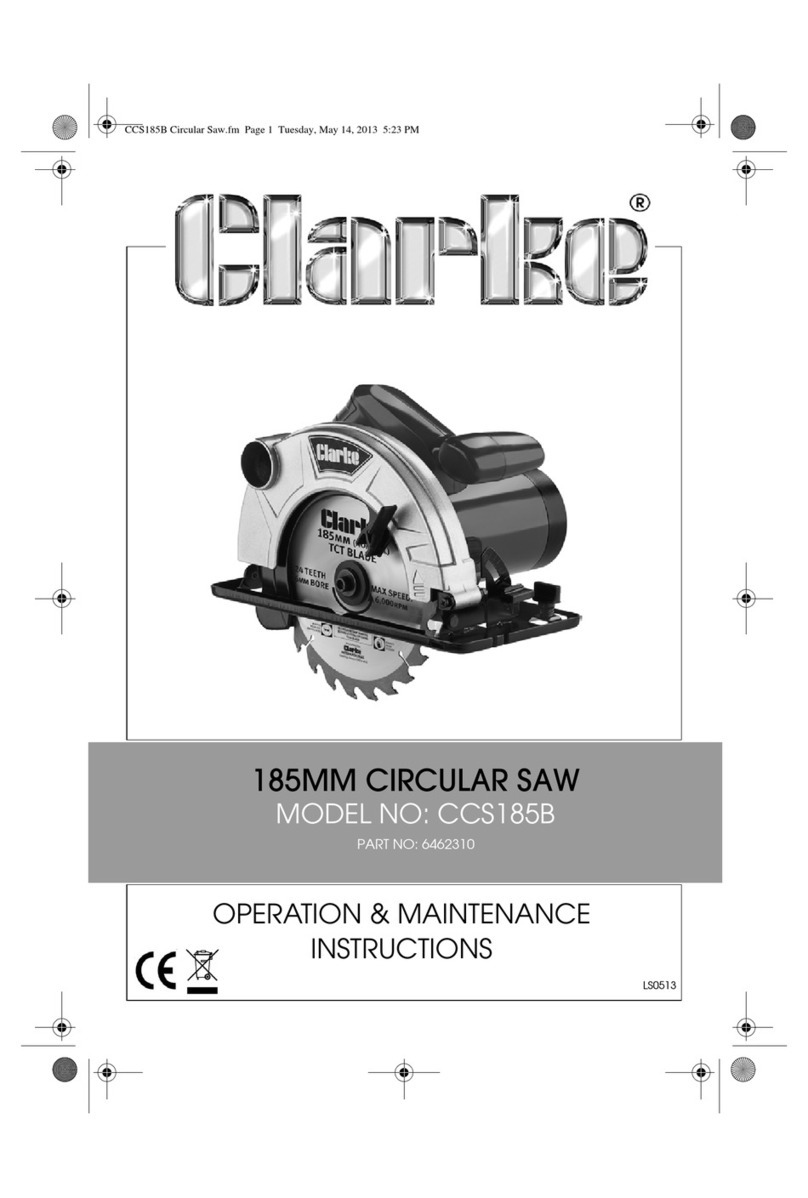
MK-212 Revision 10/05, Effective Date October 4, 2005
Page 5
SAFETY
MAINTAIN TOOLS WITH CARE.
Keep tools clean for the best and safest
performance. Always follow maintenance
instructions for lubricating, and when changing
accessories.
DISCONNECT TOOLS.
Power tools should always be disconnected before
servicing or when changing accessories, such as
blades, bits, cutters, and the like.
REDUCE THE RISK OF UNINTENTIONAL
STARTING.
Make sure the ON/OFF Switch is in the OFF
position before plugging in a power tool.
Hazard Symbols:
USE RECOMMENDED ACCESSORIES.
Consult the owner's manual for recommended
accessories. Using improper accessories may
increase the risk of personal or by-stander injury.
NEVER STAND ON THE TOOL.
Serious injury could occur if a power tool is tipped, or
if a cutting tool is unintentionally contacted.
CHECK FOR DAMAGED PARTS.
Before using a power tool, check for damaged parts.
A guard or any other part that is damaged should be
carefully checked to determine it would operate
properly and perform its intended function. Always
check moving parts for proper alignment or binding.
Check for broken parts and mountings and all other
conditions that may affect the operation of the power
tool. A guard, or any damaged part, should be
properly repaired or replaced.
DIRECTION OF FEED.
Always feed work into a blade or cutter against the
direction of rotation. A blade or cutter should always
be installed such that rotation is in the direction of
the arrow imprinted on the side of the blade or
cutter.
NEVER LEAVE A TOOL RUNNING UNATTENDED
– TURN POWER OFF.
Do not leave a tool until it comes to a complete stop.
Always turn a power tool OFF when leaving the work
area, or, when a cut is finished.
ELECTRICAL SHOCK!
Never touch electrical wires or components
while the motor is running. Exposed, frayed
or worn electrical motor wiring can be sources
of electrical shock that could cause severe
injury or burns.
ACCIDENTAL STARTS!
Before plugging the equipment into an
electrical outlet, be sure the ON/OFF Switch
is in the OFF position to prevent accidental
starting. Unplug the power tool before
performing any service operation.
ROTATING OR MOVING PARTS!
Keep hands, feet, hair, and clothing away
from all moving parts to prevent injury.
Never operate a power tool with covers,
shrouds, or guards removed.
Sawing and drilling generates dust.
Excessive airborne particles may cause irritation to
eyes, skin and respiratory tract. To avoid breathing
impairment, always employ dust controls and
protection suitable to the material being sawed or
drilled; See OSHA (29 CFR Part 1910.1200).
Diamond Blades improperly used are dangerous.
Comply with American National Standards Institute
Safety Code, B7.1 and, Occupational Safety and
Health Act covering Speed, Safety Guards,
Flanges, Mounting Procedures, General Operating
Rules, Handling, Storage and General Machine
Conditions.
CALIFORNIA PROPOSITION 65 MESSAGE:
Some dust created by power sanding,
sawing, grinding, drilling, and other construction
activities contain chemicals known [to the State of
California] to cause cancer, birth defects or other
reproductive harm. Some examples of these
chemicals are:
• Lead, from lead-based paints
• Crystalline silica, from bricks and cement and
other masonry products and
• Arsenic and chromium, from chemically treated
lumber
For further information, consult the following
sources:
http://www.osha-
slc.gov/sltc/silicarystalline/index.html
http://www.oehha.org/prop65/out_of_date/6022kLst
A.html
Your risk from these exposures varies depending
on how often you do this type of work. To reduce
your exposure to these chemicals, work in a well-
ventilated area, and work with approved safety
equipment, such as those dust masks that are
specially designed to filter out microscopic particles.
on
on
